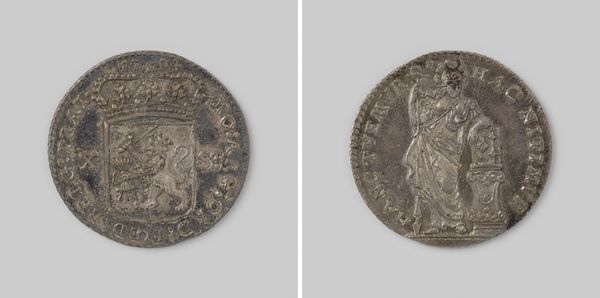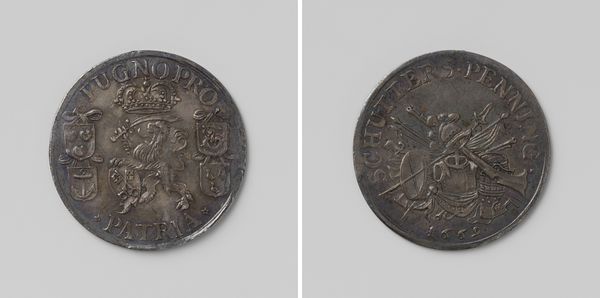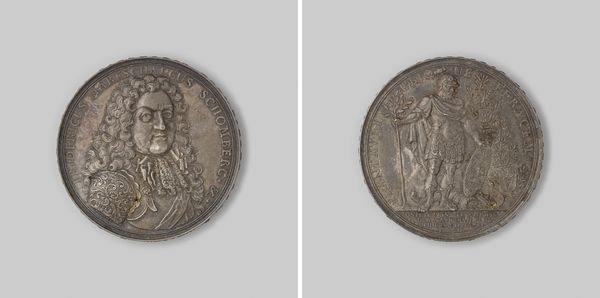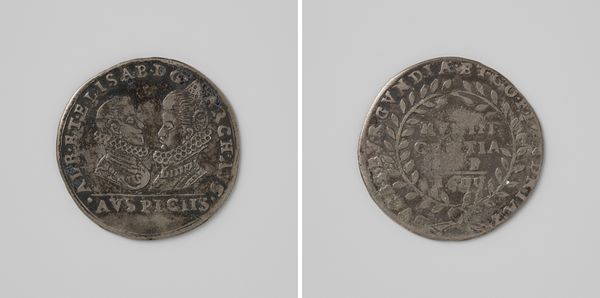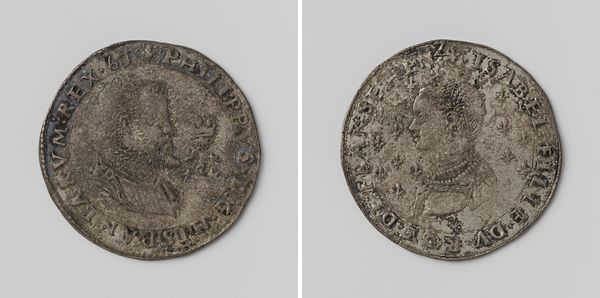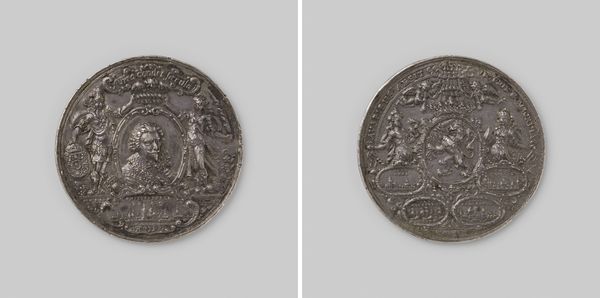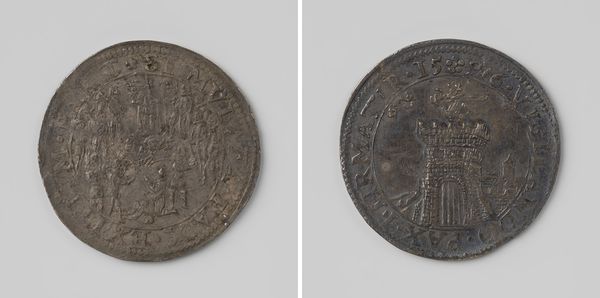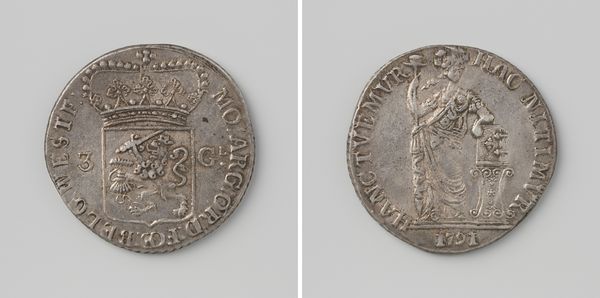
print, metal, relief, engraving
#
portrait
#
decorative element
#
baroque
# print
#
metal
#
relief
#
history-painting
#
decorative-art
#
engraving
#
decorative art
Dimensions: diameter 3.6 cm, weight 15.85 gr
Copyright: Rijks Museum: Open Domain
Curator: At first glance, it seems like an exercise in symbolic heraldry rendered in a Baroque style—perhaps even verging into decorative art due to the meticulous detail. Editor: We're looking at a "Nijmeegse daalder," or Dutch Thaler, from 1689. It's a silver coin, so the medium itself speaks volumes about value, exchange, and the material culture of the time. Its relief features imagery of military might. Curator: The way the figures and emblems are arranged creates an interesting tension. The soldier stands with a very prominent sword. Is it supposed to symbolize protection? Editor: Exactly! A standing, armed figure beside a heraldic shield sends a message of political power and civic defense that circulated widely among the population during this era. Coinage was a very powerful form of political communication. Consider, too, the minting process—the labour and resources involved speak to the economic infrastructure needed for such production. Curator: The inscription ringing the edge seems deliberately spaced to emphasize a sense of ordered authority and visual containment. A lion rampant on either side is like visual bookends of the city's might. Editor: Think, too, about the specific alloys mixed to give it the reflective qualities that helped it retain visual value. The production of coins often relied on exploiting newly conquered lands for materials. So even its reflective materiality speaks of colonialism. Curator: Fascinating—I’m keen to note the details like the feathered helmet and intricately rendered garments. A signifier of wealth is clearly visible and designed to reinforce the coin's implicit statement of affluence and political strength. Editor: It's really amazing to see the relationship between something small, that fits in the palm of your hand and how it ties back into an economic system which can be felt all over the globe. It brings into focus a time when commodities held real material weight, rather than the abstraction of modern finance. Curator: Indeed, this deep dive gives us both new eyes to behold this Baroque specimen as more than a piece of shiny metal, as something laden with socio-political discourse. Editor: Agreed. By recognizing how it works we're really acknowledging all the hidden labour and processes necessary to produce art and trade in Nijmegen centuries ago.
Comments
No comments
Be the first to comment and join the conversation on the ultimate creative platform.
